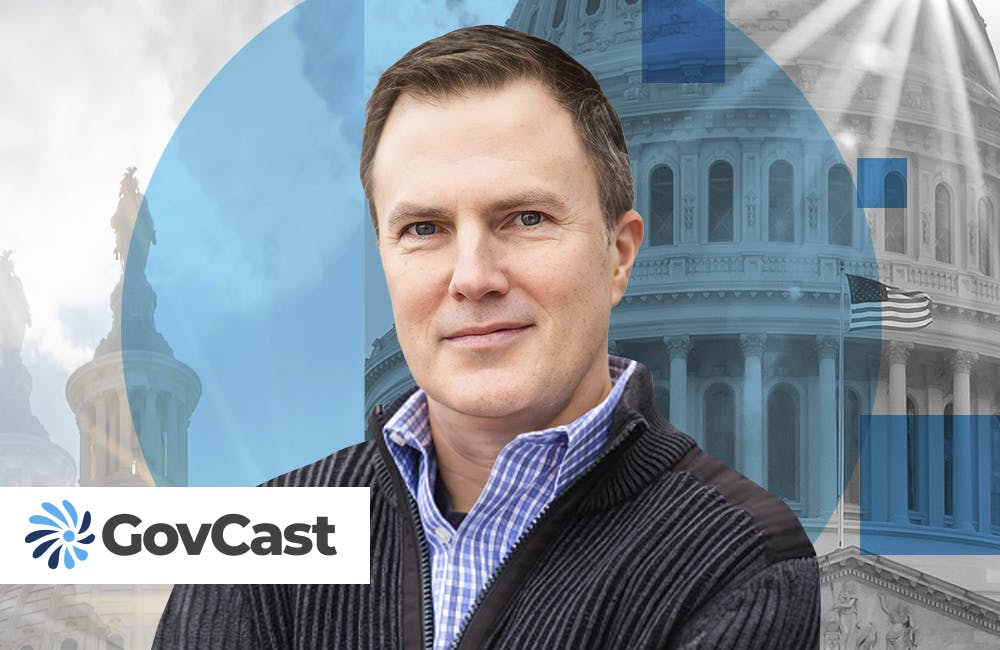The past two years saw increased focus to issues around health disparities. Plus, tech modernization efforts and shifting virtual working environments across government present ongoing challenges within data access, health equity and customer experience that could otherwise improve service delivery to the public.
For example, “most medical information is currently only available in data silos,” according to a recent report from Acxiom. “By connecting health data with consumer data, brands can uncover more meaningful insights about their core consumer.”
While many federal agencies are addressing issues around accessibility, equity and inclusion in medicine, the Office of the National Coordinator for Health IT has made its own strides to move the ball forward. Specifically, it’s weaving equity into national health IT standards.
One effort is the U.S. Core Data for Interoperability version 2 (USCDI v2), which increased representation and inclusion in health data standards, National Coordinator for Health IT Micky Tripathi told GovernmentCIO Media & Research.
USCDI is one of the standards ONC sets to create a floor on the data required for electronic health records to include for interoperability. Since ONC certifies about 95% of the electronic health records (EHR) systems providers use, Tripathi said he considers USCDI as the “minimum dataset” for health care delivery systems.
ONC iterated on the original core data standards first with a draft of v2 in January. Tripathi said USCDI v2’s draft at the time did not address health equity or include social determinants of health, so throughout the following months ONC added five categories of social determinants of health, including economic stability, education access and quality, health care access and quality, neighborhood and built environment, and social and community context.
In addition to social determinants, ONC also added data elements that capture sexual orientation and gender in the final update in July.
“With the social determinants of health data (SDOH) elements and sexual orientation and gender (SOG) data, now you’ve got race ethnicity and language, SOG and SDOH data elements, and that starts us on the path of saying the USCDI is now at least on the path to providing the core data foundation to support this idea of health equity by design,” Tripathi said. “You can’t have anything related to health equity, health equity applications, health equity functions if you don’t have the core data to even recognize where might health equity, health inequity exist.”
Tripathi added that establishing USCDI v2 this summer started a process of motivating industry partners to further specify the standards that will represent SDOH data, since ONC has not cemented them yet. This, Tripathi highlighted, represents the industry partnership and input that ONC will incorporate into SDOH’s data standards by summer 2022.
As ONC works toward incorporating SDOH and SOG into national health data interoperability standards, Tripathi hopes that industry partners and vendors will grow to build systems with “equity-by-design.”
“It’s just a recognition that these health equity issues are hidden — some of them aren’t obvious at all,” Tripathi said. “The reason that people talked about security-by-design, for example, is because it wasn’t obvious. What are security issues, and it only comes up later. ‘Oh that’s a security hole. We didn’t realize how to put a patch.’ If you, from the ground up, start to think about what could be health equity issues, then you start to say, ‘all right, now I’m going to ask myself those hard questions early on.’”
Data security is an area where blockchain could be beneficial.
“Data that is stored in blockchain cannot be altered, and this technology can provide the backbone for a health data infrastructure that enables patients to control and benefit financially from their health data,” according to the Acxiom report. “Companies are already using blockchain to secure patient health records, clinical trial information and much more.”
This data could also enable making more meaningful insights about patients and their care, especially with considerations like location, demographics, access and more in mind.
“With this opportunity comes both the need for a deep understanding of each person’s health as well as an understanding of the microlocality of their environment, what is going on and what is relevant to them at a given time,” according to Acxiom. “These insights not only drive better marketing decisions that are better aligned with consumer needs, but they also have the power to influence the patient journey, and in turn, improve health outcomes, optimize the entire field of health care, and give people the ability to navigate their own health and wellness.”
For ONC, Tripathi said the agency’s next goals are to increase adoption and intervention.
The adoption piece is a difficult challenge for ONC because, while it can require that EHR systems support the CDC’s dataset for 900-plus categories of race, ethnicity and language data, providers and end users are not required to use those categories.
“That’s part of what we’re doing now, is looking across and saying, ‘Okay, how do we figure out what are the different ways that we can use to motivate adoption so we have greater consistency of data capture, and from our perspective, using the CDC dataset would be a great way to do that because it’s already required in EHR systems,” he said.
Triapthi also wants to increase data capture and use to drive intervention in health care. He sees the introduction of SDOH data into the clinical setting as a pathway to increasing acute health care — such as drawing information about vitals and housing insecurity to understand what’s affecting a patient’s health. The next step, Tripathi added, is to drive SDOH and SOG data into preventative health.
“I’d actually like to have mechanisms that I can actually intervene upstream so that those health inequities that are generated upstream and have repercussions downstream [to find out] how do I actually prevent those from turning into bigger effects downstream?” Tripathi said.
ONC has been issuing Leading Edge Acceleration Projects in Health IT (LEAP) grant awards to help drive new breakthroughs in health technology. This year, ONC awarded a grant to the University of Texas at Austin to incorporate SDOH data into clinical referral systems to help meet intervention needs based on individuals’ demographics.
“What the University of Texas at Austin is working on is electronic referral management for things like social services,” Tripathi said. “We focused on EHR systems on interoperability mechanisms and other kinds of approaches to say, ‘How do I have electronic referrals so that I can easily refer that patient to a cardiologist?’ … In the same way, why can’t we have mechanisms or why don’t we have mechanisms to say, I should be able to refer them to housing assistance because it may turn out that referring them to housing assistance will have a bigger impact on their care than referring them to a cardiologist.”
Tripathi hopes to learn best practices and lessons from the project. He added that amid the work around USCDI v2, SDOH and other health data standards, he hopes to build lessons learned into ONC’s work with interoperability, decision support, algorithms and more to prevent further health inequities and improve outcomes.

















